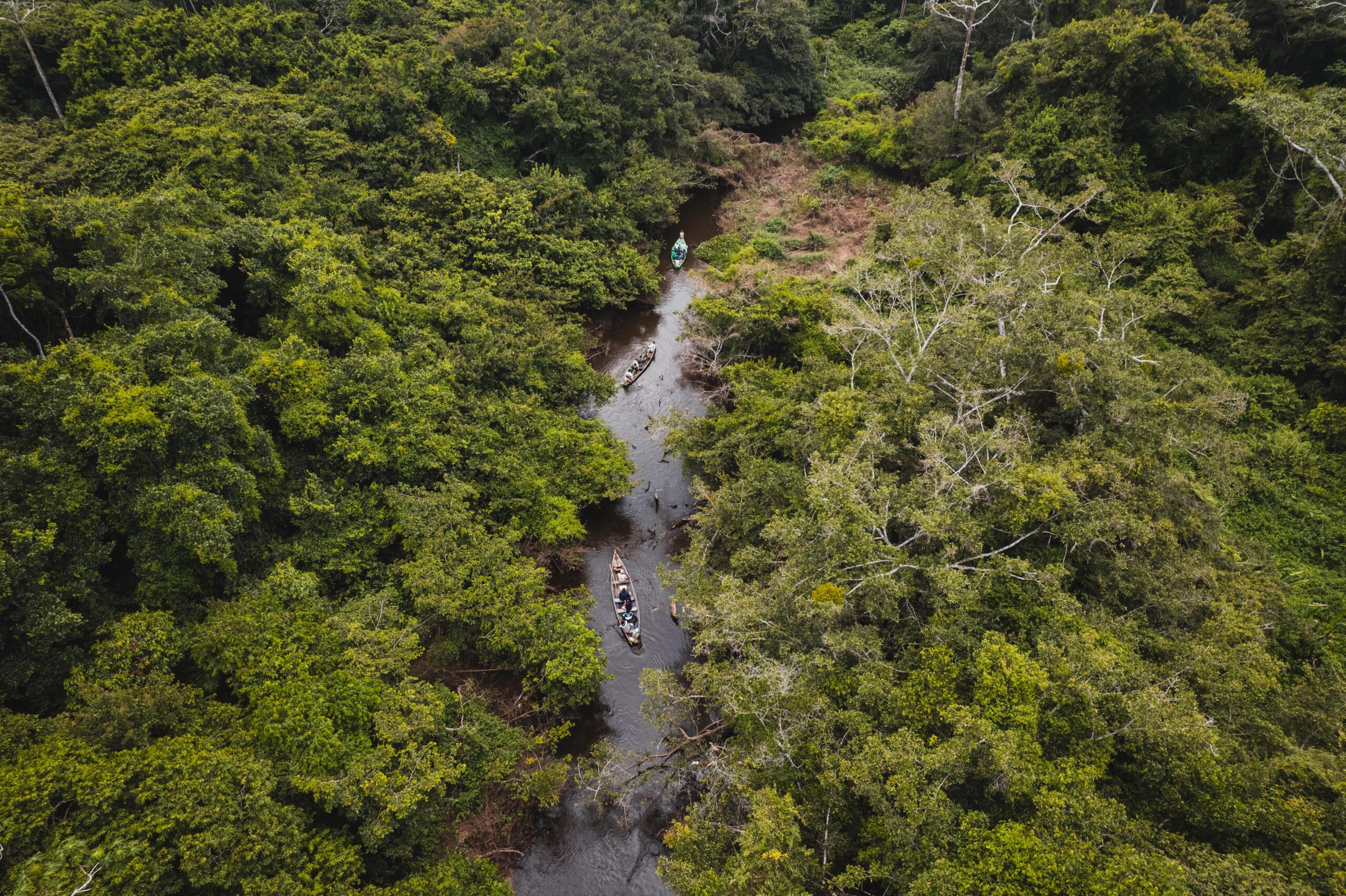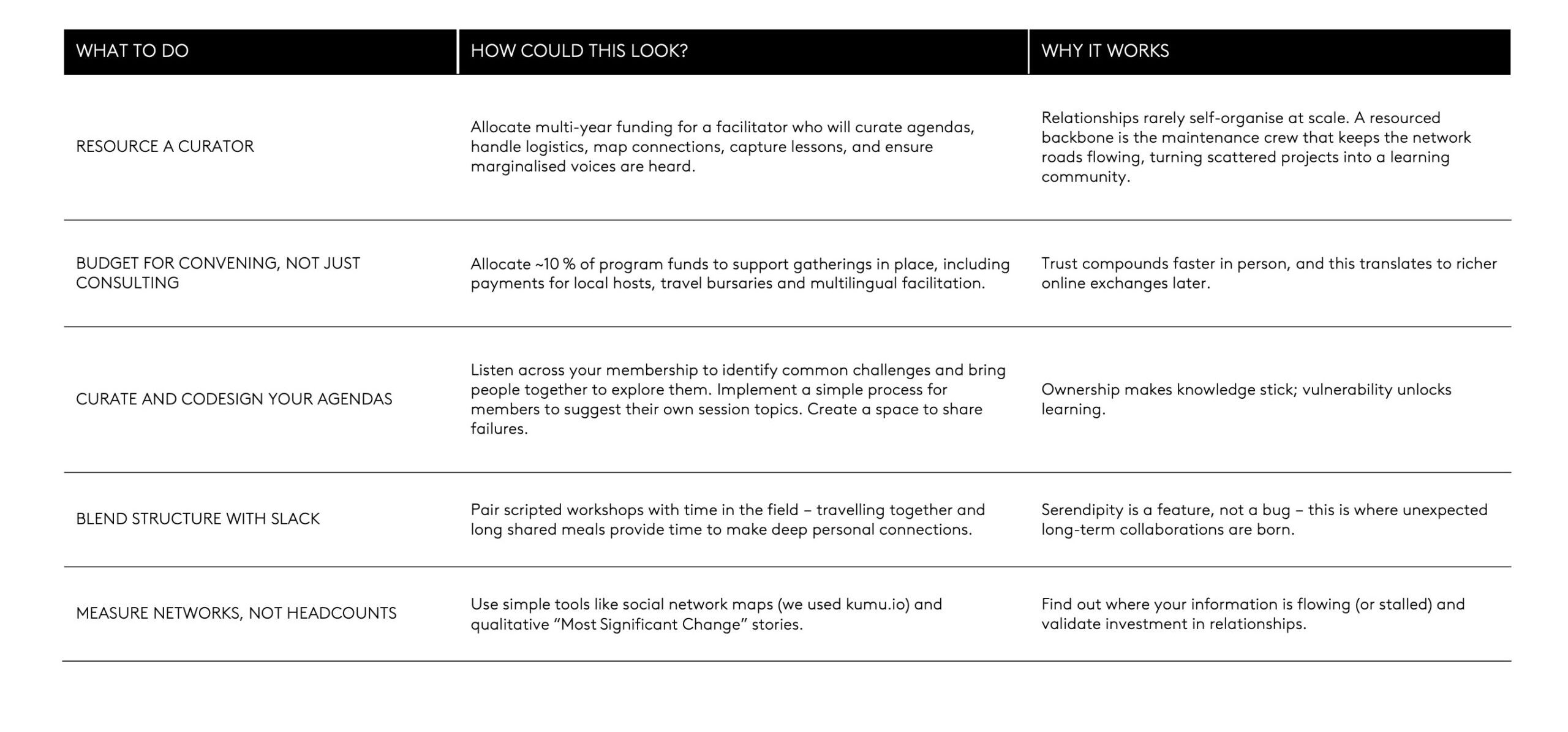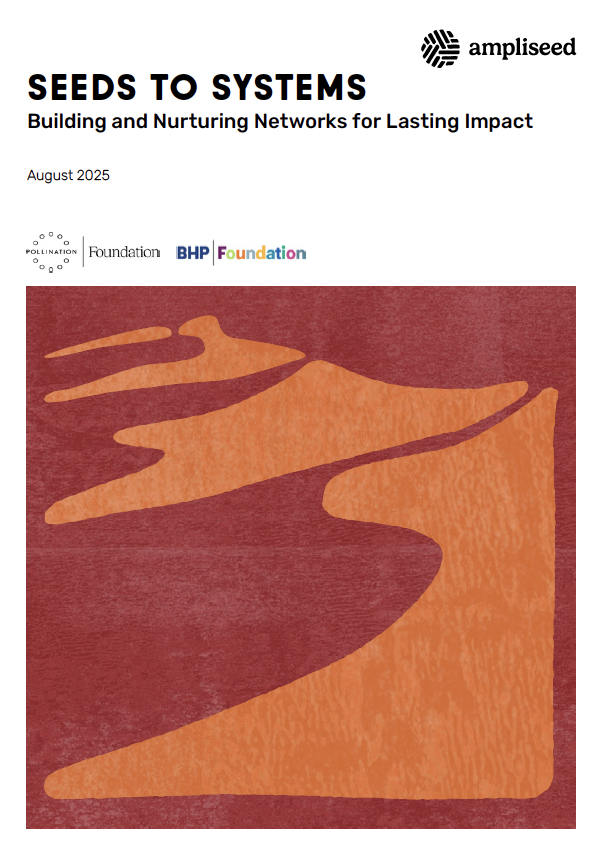London+44 203 355 1556
Sydney+61 2 8313 7109
Melbourne +61 2 8313 7109
Washington +1 872 201 1168
Learn how to ensure voluntary nature credit finance flows to IP&LCs in Pollination Foundation’s new Leading for Nature report. Together with a collective of partners we provided high-level insights and identified the pillars of activity critical for IP&LCs to access and lead in development of nature credit projects.
View ReportVoluntary biodiversity credit schemes globally are displaying a commitment to high-integrity market features as buyers demonstrate their willingness to engage, a new Pollination report finds.
04 September 2025 / WORDS BY KIRSTY GALLOWAY MCLEAN
When BHP Foundation invited us five years ago to build Ampliseed, a network connecting landscape-scale environmental resilience projects around the world, we were initially looking to build stronger projects, clearer strategies, better data.
What we found alongside all that was the deeper lesson that emerged from every experience, interview, survey and conversation:
Relationships are a form of critical infrastructure.
Relationships move ideas, trust and commitment through a system in the same way roads move goods or broadband moves information. Without strong relationships, even the best funded efforts can hit a dead end.
Download our full report Seeds to Systems: Building and Nurturing Networks for Lasting Impact below for in-depth insights, or read on for a 3-minute overview.
“All of our work is founded on relationships… how we stay connected, build trust and learn together while tackling some of the world’s most complex challenges.” – Ariadne Gorring, Co-CEO, Pollination Foundation
In 2019, seven large-scale initiatives, scattered across four continents, agreed to test a simple hypothesis: connect practitioners across places and cultures to see if peer learning accelerates impact. Five years, two pandemics and 157 active members later, the results are in.
These outcomes didn’t hinge on a single training module or grant. They hinged on cultivated relationships – the infrastructure you can’t see on a balance sheet.

Ampliseed in Moyobamba, Peru. © Bill Salazar

Ampliseed member field trip to the flooded forest in community-run Tingana Conservation Reserve, Peru,to discuss local enterprise. ©Bill Salazar
Infrastructure hardware attracts investment because it lowers transaction costs and multiplies returns. Relational infrastructure does the same:
In other words, “return-on-relationship” (RoR) has a significant impact on the bottom line of your return-on-investment (ROI).

Dessert rain © Pollination Foundation
 Beyond conservation
Beyond conservationAlthough the Ampliseed learning and leadership network focused on conservation, these lessons aren’t limited to coral reefs or rainforests. Any organisation tackling complex, place-based challenges (circular economies, community health, climate adaptation, for example) needs relational infrastructure as desperately as it needs capital flows. The World Bank’s communities of practice toolkit, Stanford’s systems leadership research and the OECD’s collective impact evaluations all share the same conclusion: change moves at the speed of trust.
Our new learning paper, “Seeds to Systems: Building & Nurturing Networks for Lasting Impact,” unpacks five years of data, stories and practical advice – including a Theory of Change (p. 12) and an impact model you can adapt straight away (p. 14). Download the full report below.
“The knowledge is in the network.”
Invest in your network, and watch the system shift.

Receive latest news and global perspectives from Pollination.
By clicking submit, you agree to our Terms & Conditions.